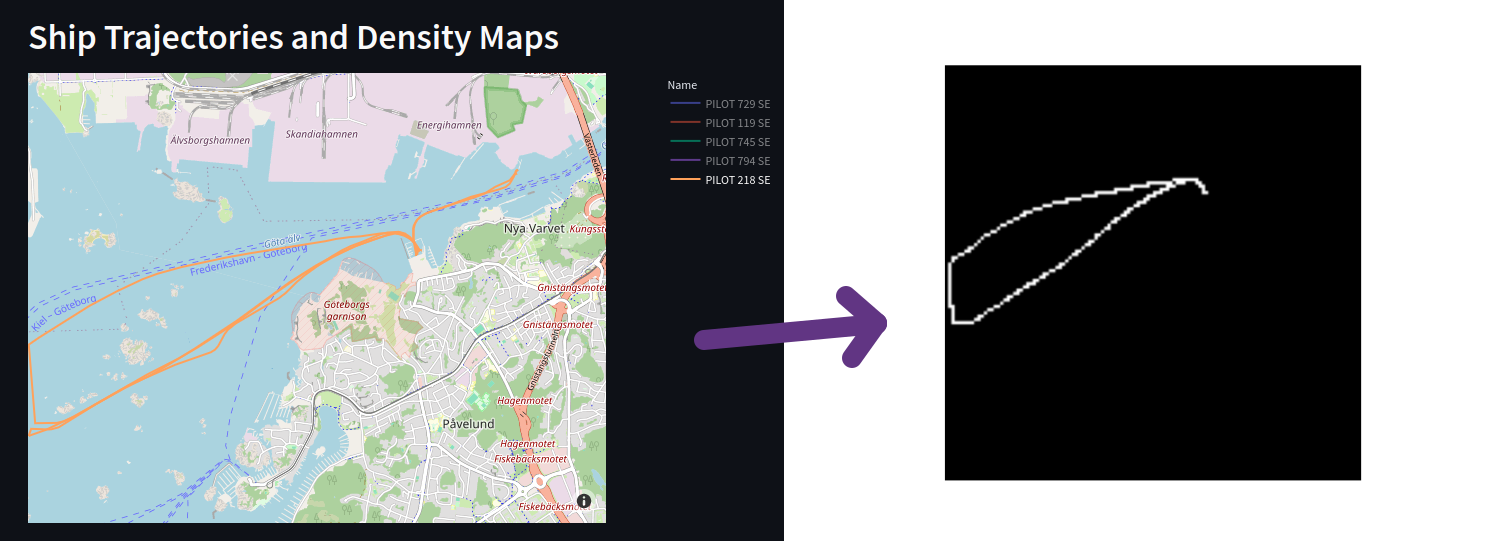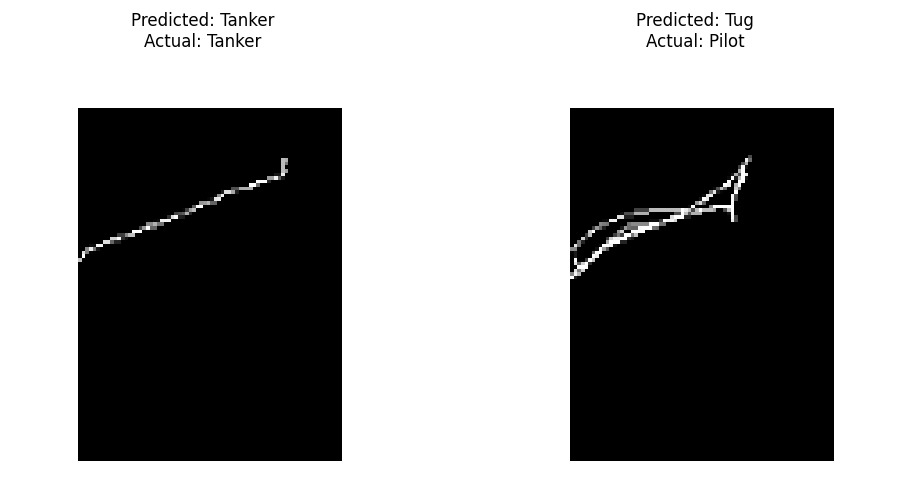Vessel classification using AIS data
As I was gaining experience in machine learning, I found myself tumbling down a rabbit hole centered around Convolutional Neural Networks (CNNs). In particular, I was game to experiment with these networks onto spatial patterns. I stumbled upon the MovingPandas library for movement data and analysis, which provided incredibly intuitive tutorials. I focused my attention to the example using AIS data published by the Danish Maritime Authority on the 5th July 2017 near Gothenburg.
It was a good start to apply some CNN. Inspired by the work of Chen et al. (2020) who train neural network to learn from labeled AIS data, I set out a CNN aiming at classifying ships by their categories, given their trajectory. For now, this is not completely functionnal since the dataset is really restricted. However the method is scalable.
First, I designed a streamlit webapp (the code is available on my github) to display vessels trajectories and densities given their category.

I removed categories of vessel without enough sample. I also filtered out trajectories which duration is less than half the median duration.
To train the CNN I need to compute images from the trajectories. There will be image of 128x128 pixels. I split trajectories in segments of half the median duration (~9h). I browse these segments and for each step of time, I fill the corresponding pixel (by mapping the matrix of pixels to the min/max longitude and latitude available in the data). I discard all the motionless trajectories.

Once I have all the images, I set up my CNN:
model = tf.keras.Sequential([
tf.keras.layers.Conv2D(32, (3, 3), activation='relu', input_shape=(128, 128, 3)),
tf.keras.layers.MaxPooling2D(2, 2),
tf.keras.layers.Conv2D(64, (3, 3), activation='relu'),
tf.keras.layers.MaxPooling2D(2, 2),
tf.keras.layers.Conv2D(128, (3, 3), activation='relu'),
tf.keras.layers.MaxPooling2D(2, 2),
tf.keras.layers.Flatten(),
tf.keras.layers.Dense(512, activation='relu'),
tf.keras.layers.Dense(num_classes, activation='softmax') # Use num_classes for the output layer ])
This is a classical architecture of a CNN network, composed of an alternation of convolution layers (feature identification) and pooling layers (dimension reduction). You'll find a good summary of pooling layers here .
Then, I compile the model and fit the model :
model.compile(optimizer='adam',
loss='categorical_crossentropy', # Use 'categorical_crossentropy' for multi-class classification
metrics=['accuracy'])
history = model.fit(
train_generator,
steps_per_epoch=train_generator.samples // train_generator.batch_size,
epochs=10
)
Unfortunately my dataset was not big enough to give accurate statistics. The model seems able to recognize some patterns:

This model may be improved by encoding acceleration and speed in the color channels. Also, I should use data augmentation techniques (rotations?) to populate the dataset.